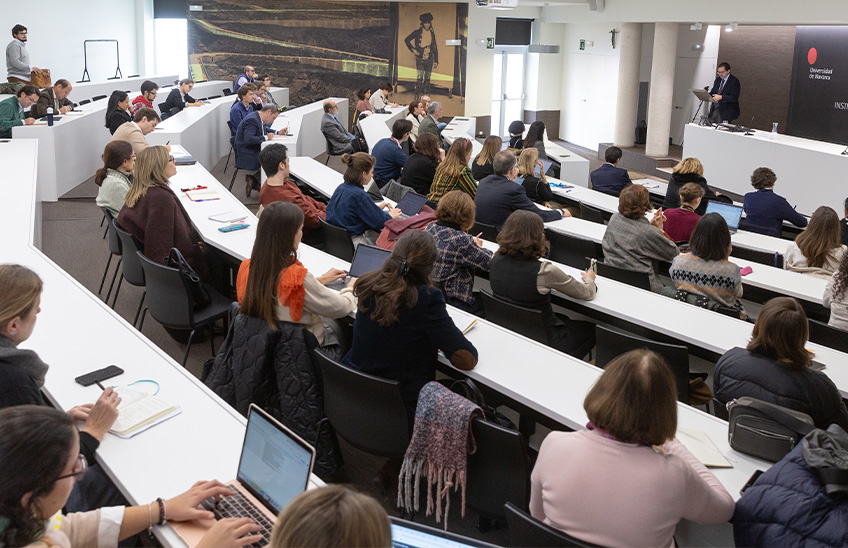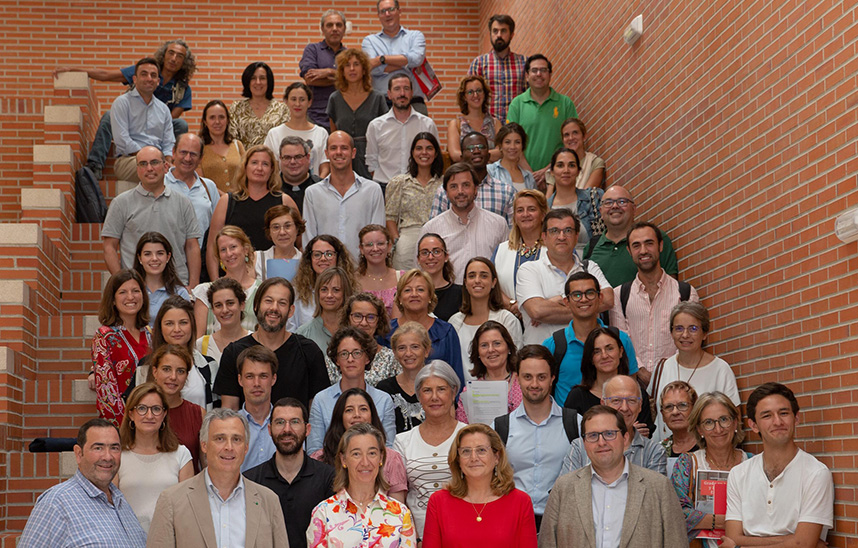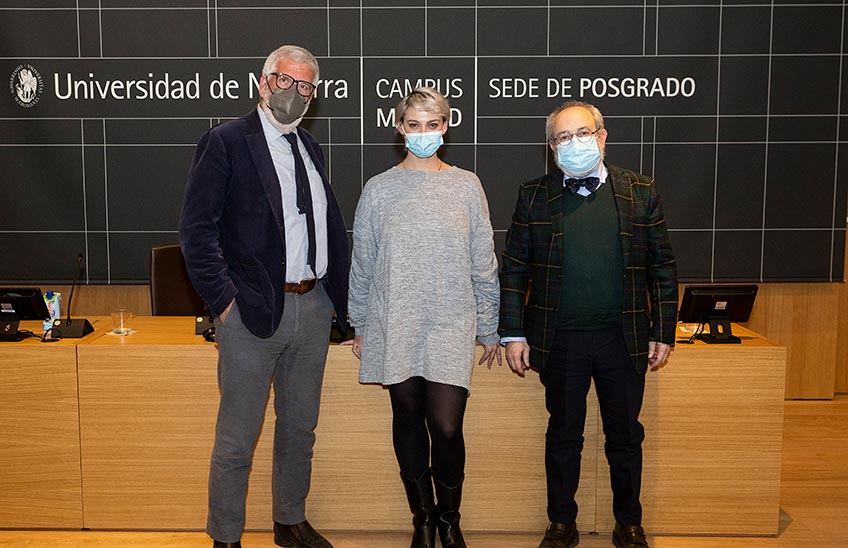Beyond science: medical students explore the Prado from a humanistic point of view, led by Professor Javier Azanza
The activity is part of theelective subject subject of the Core Curriculum Institute Core Curriculum

In early April, 28 medical students traveled to Madrid to visit the Prado Museum. This activity is part of the subject elective subject of the Core Curriculum Institute "Seeing and understanding art through the eyes of the Prado". Accompanied by Javier Azanza, professor of Art at the School of Philosophy and Letters of the School of Philosophy and Lettersthe students toured the exhibition halls, had a live glimpse of the works they had studied in class and discussed some of the medical aspects collected throughout the History of Art.
The activity had previously started in the classroom, where the students began to work on the works related to healing practices and medical science that are exhibited in the Museum. Throughout the semester, organized in groups, they prepared their exhibitions based on the artistic aspects they had seen in class and related them to the medical aspects of their profession.
"Both Art and Medicine are disciplines that we have to understand in a humanistic core topic . Both are related to aspects that deal with evil and good, the concept of divinity... They share all that and, deep down, both are very humanistic," explains Javier Azanza.
In this sense, Lucía Reed, a medical student, explains that she chose this subject as an elective subject because for her "the division between science and art has no place. Everything goes hand in hand and they are not disciplines that contradict each other, but rather enrich each other.
They were able to analyze in detail surgical themes, such as The Extraction of the Stone of Madness (1501-1505), by Hieronymus Bosch, or The Charlatan of the Grindstone (1620-1625), by Theodoor Rombouts. Also the relationship between alchemy and medicine in works such as The Alchemist (1631-1640) by Teniers; or the hospital wards through A hospital conference room during the visit of the chief physician (1889), by Luis Jiménez Aranda.

Extraction of the Stone of Madness by Bosch and The Alchemist by David Teniers.
"Most medical students lack the general framework and context of the works, so you have to guide them to situate both their formal characteristics and the message that the painting conveys," says Azanza. However, he adds that being accompanied by future doctors has allowed him to see some works with different eyes, because "they ask questions that have nothing to do with those asked by history students and always make you think about new things.
For example, when they explained the work of Luis Jiménez Aranda (which sample a doctor passing enquiry in a hospital conference room ), the students asked why the beds were arranged like that or why the hospital conference room was the way it was. "These comments take me out of my comfort zone: it's not the subject of questions that I ask in class. Seeing the work in this way also opens my eyes," explains the professor. "It was very surprising to see firsthand the paintings we had been studying in class." Medicine has been evolving with history, and the advances have been reflected in art.
A tour full of details in El Prado
When they finished the route that they themselves proposed through the rooms of the Prado, the students began a second visit in which they could see some of the great works that are discussed in the Prado and that Professor Azanza had explained in class, such as El Descendimiento (ca. 1436), by Van der Weyden; The Table of the Deadly Sins (1500), by Hieronymus Bosch; Las Meninas (1656), by Velázquez; The Adoration of the Magi (1609), by Rubens; and The Shooting of May 3 (1814), by Goya, among others.
"I've always liked art a lot, although I'm not very good at it. I had never had a subject like this before and being able to visit the Prado with Professor Azanza following this approach has helped me a lot to understand it," explains Ana Guerras, another of the students who visited the Museum.
"This educational activity fulfills a wish of Francisco Calvo Serraller and is the result of the close partnership between the Prado Museum and the Friends of the University association ," continues the professor. "The Core Curriculum Institute proposed it two years ago and I see that the students enjoy it," he concludes.

The group of medical students who visited the Prado, together with Professor Azanza, before starting their visit Prado.




